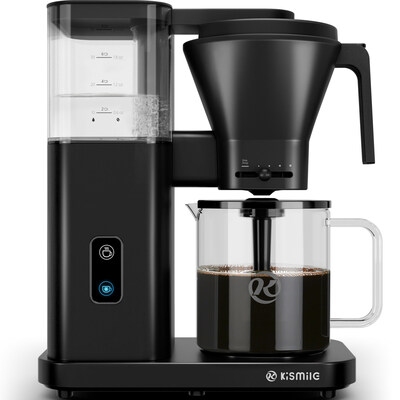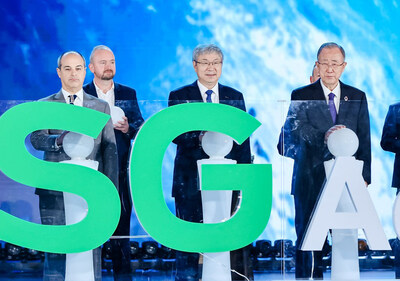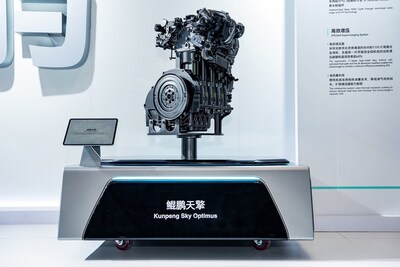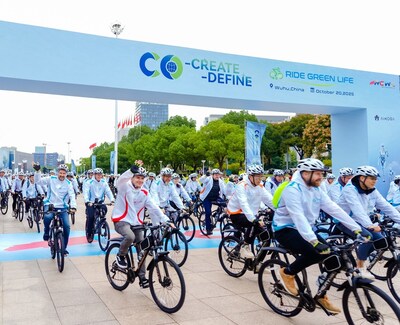SHENZHEN, China, Oct. 22, 2025 /PRNewswire/ — Kismile, a home appliance brand known for its thoughtful design and advanced technology, today announced the launch of its new Drip Coffee Maker, delivering café-level flavor at home with remarkable precision and simplicity.

Kismile Precision Drip Coffee Maker — combining barista-level brewing precision with elegant simplicity.
Built to meet the rigorous SCA and ECBC Gold Cup standards currently under certification, this model ensures every cup achieves the ideal balance of extraction, temperature, and aroma. With both hot and cold brew functions, a touch control interface, and a removable water tank, the Kismile Drip Coffee Maker caters to coffee lovers who value both performance and convenience.
Professional-Grade Thick Film Heating System
At the heart of the Kismile Precision Drip Coffee Maker lies an advanced thick film heating element. This technology enables water to reach the ideal extraction temperature of 197℉-205℉ in just three seconds. This rapid, precise heating is crucial for achieving the perfect “bloom” and full flavor extraction, directly meeting the strict water temperature standards set by both SCA and ECBC.
Engineered for Everyday Perfection
From the first drop to the final sip, every detail is crafted for consistency and comfort. The aluminum alloy body adds modern elegance and durability, while the heating system maintains precise water temperature for optimal extraction.
A magnetic anti-drip design automatically stops flow when the carafe is removed—preventing spills and stains on the warming plate. The detachable water tank makes cleaning effortless and ensures each brew starts with fresh water—solving one of the most common frustrations of traditional coffee machines.
Designed with Real Users in Mind
“Many coffee makers on the market focus on complexity rather than daily use. We wanted to bring the joy of barista-quality coffee into a simple, intuitive design,” said Cyrus Guo, Product Director at Kismile.
“This coffee maker was built to address everyday frustrations—making it easier to clean, more stable in performance, and more enjoyable to use.”
Smart Functionality and Flexible Brewing
The Kismile Drip Coffee Maker offers adjustable coffee flow and strength, allowing users to fine-tune flavor intensity according to their preference. The brewing system is compatible with V-shaped filters, flat-bottom filters, or reusable mesh filters, providing versatility for different coffee styles.
Its Cold Brew Mode extracts smoothly at lower temperatures, delivering a refreshing flavor for warmer days—an exclusive feature rarely found in drip coffee makers. Meanwhile, the heat preservation system keeps coffee between 176℉-185℉ for up to 40 minutes, ensuring every cup stays warm and aromatic.
For easy cleanup, both the brew funnel and glass carafe are dishwasher-safe, combining premium craftsmanship with practical everyday care.
The Kismile Precision Drip Coffee Maker is now available at https://kismile.com/ and on Amazon.
Performance data regarding 3-second heating to optimal extraction temperature (197℉-205℉), temperature precision, and safety features are based on internal laboratory testing under specific conditions. Actual results may vary depending on initial water temperature, ambient temperature, water quality, and altitude. All trademarks mentioned are the property of their respective owners.
About Kismile
Founded in 2015, Kismile is a premium home appliance brand dedicated to combining safety, innovation, and elegant design. From kitchen essentials to smart-featured appliances, Kismile products are built to make modern life simpler, warmer, and more joyful.
Guided by the belief that ordinary life deserves extraordinary care, Kismile continues to innovate appliances that blend style, functionality, and love—empowering every household to savor the beauty of daily living.













